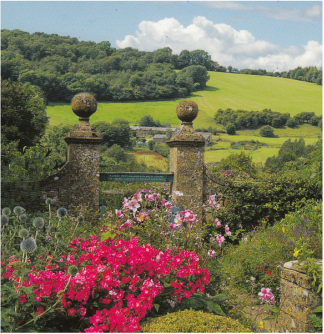
The gardens we explored ranged from very personal gardens such as Wendy Dare’s hillside terraces next to an old mill in Gloustershire to the vast acreage of the Isabella Plantation in Richmond Park near the Thames to the informal elegance of fenced-in Eccleston Square in a posh area of London, from the large and quite formal gardens of the Stourhead estate in Wiltshire and Hidcote Manor in the Cotswolds to the eccentricities of the historic Chelsea Physic Garden. We also spent a day wandering among the elaborate garden displays of the Chelsea Flower Show in London. We traveled farther afield by train to the ancient village of Rye on the English Channel, where we visited Henry James’s house and garden.
Nowhere in the world is the passion for gardening as alive as in Britain. For centuries, gardens have inspired British writers, painters, and lovers. From the great country estates to tiny city gardens, the English enjoy using their long growing season to produce an amazing variety of flowers and gardens. Even in lousy weather, they pull on their boots and slickers and happily muck about in the dirt. We preferred some gardens to others, but found each one fascinating and beautiful in its own way. In my coming posts, I’ll share some of our experiences and our impressions of the countryside and gardens that we visited.
If you enjoy gardens, you'll also enjoy reading
Simone Martel’s collection of garden-themed
Stories, EXILE’S GARDEN, Edwin E. Smith Publishing.

 RSS Feed
RSS Feed